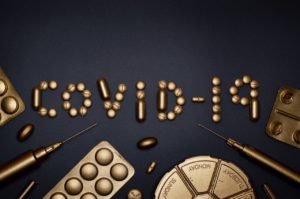The Stuck Song Syndrome (Earworms)
Does it ever happen to you that you listen to a song in the morning and the tune keeps looping in your head all day long? Or do you ever listen to a song a day before your exam and the next day, instead of the answers, you remember the lyrics of the song? This is indeed a common experience for almost everyone and has been termed as the ‘Stuck Song Syndrome’ or ‘Earworms’.
Introduction
The paper “Tunes stuck in your brain: The frequency and affective evaluation of involuntary musical imagery correlate with cortical structure” published on the journal ELSEVIER has focused on the neural basis of the Stuck Song Syndrome, technically termed as Involuntary Musical Imagery (INMI). The past studies have suggested that this is even more common amongst musicians and those with recent or active engagements with music. Studies have suggested that people with neuroticism and openness to experience are associated with more of such syndrome and that its occurrence depends on availability of cognitive resources (mental richness). But what could be the reason that such events provide a good experience sometimes but sometimes be irritating too? Let’s see what this research paper has to say about such phenomenon.
Understanding the tools.
The study here has used a new measure called Involuntary Musical Imagery Scale (IMIS) to capture multiple facets of the INMI experiences such as, negative experience (Negative Valence factor), help or positive experience (Help factor), reflection of personal matters, worries or concerns (Personal Reflection factor) and the extent to which people move in time to their INMI (Movement factor). Additionally, two common methods: Voxel-based morphometry (VBM) and cortical thickness measurement were used to study the relationships between brain structure and behavior. VBM measures variations in gray matter volume (GMV) at different locations of brain, while cortical thickness measures the thickness of gray matter.
The Study and Inference
A) IMIS SCALE
Among 44 people who took part in the study, 43 reported having INMI. The personal assessment of the participants revealed that, those who had received training in music had more frequent INMI and subjects that usually have high engagements with music, including concerts and writing music, had higher scores on Negative Valence factor; Help factor as well as Movement factor.
B) VOXEL-BASED MORPHOMETRY
VBM results suggested that the amount of Gray Matter Volume (GMV) in a cluster located in the right temporal pole (TP) was found to be higher (increased) in the subjects who had higher scores on Negative Valence factor. The TP is one of the parts of a network for affective processing (basic process driven by emotion rather than cognition).This might mean that negative feelings that had been arisen from listening to music previously is felt due to the occurrence of INMI.
In case of the subjects reporting high score on Help factor, the amount of GMV in a cluster located in the right Parahippocampal Cortex (PHC) was found to be increased but decreased in the left Middle Frontal Gyrus (MFG). Both of these regions are considered to be important for memory retrieval and evoking positive music-related emotions like joy, pleasure etc. Thus, an increased GMV in the PHC may correspond to the retrieval of memories or emotions related to the INMI episodes. In addition, MFG has been found to correlate with the degree of autobiographical (related to the events of own life) salience of musical excerpts (parts). So, this might address the reason for evoking a salient emotion attached to certain events of the life when a piece of music is looping in our heads.
C) Cortical Thickness
On the other hand, it was found that subjects with more frequent INMI showed reduced cortical thickness in four significant clusters; namely, Angular Gyrus (AG), Heschl’s Gyrus (HG), Anterior Cingulate Cortex (ACC) and IFG pars triangularis. The right HG has been implicated in the task of auditory perception, whereas the right IFG is held to have a role in pitch memory (memory of music or songs that one has listened to) as well as in auditory perception (processing sound into information) and imagery. In addition, the IFG is believed to play role in inhibition of unwanted auditory activities thus, the reduced cortical thickness in the right IFG may be linked to less inhibition of spontaneous auditory frequency i.e. INMI. Simply said, due to the reduced function of some particular parts of the brain, the unwanted, and sometimes disturbing, imagery come into play.
INMI section length as well as INMI episode length had similar direction of correlation with the cortical thickness in a cluster in the right ACC and the left Superior Frontal Gyrus (SFG). The part left AG, the ventral ACC, the PCC, the PHC etc. lie within the Default Mode Network (DMN) which is responsible for generating spontaneous thoughts (or SGT) in case of low cognitive load. So, it can be possible that due to the activation of certain parts of the brains within the default mode network (DMN), the ‘auto-pilot’ mode causes the spontaneous thoughts including the involuntary musical imagery or earworms to loop inside our heads.
Original Paper: https://doi.org/10.1016/j.concog.2015.04.020
Was this summary helpful? Mention in the comment section below.
Do not forget to check out other summaries and general blog posts.








